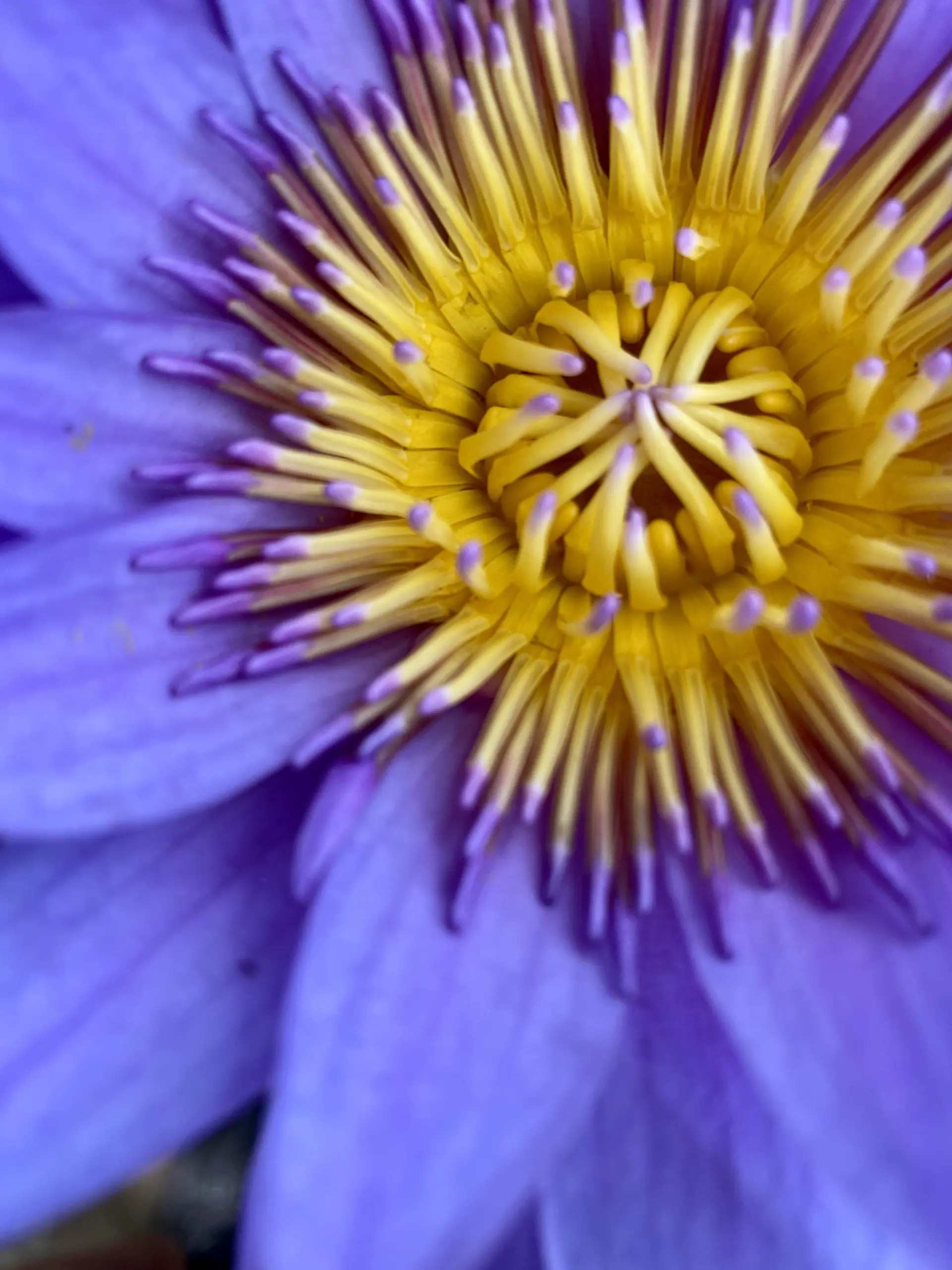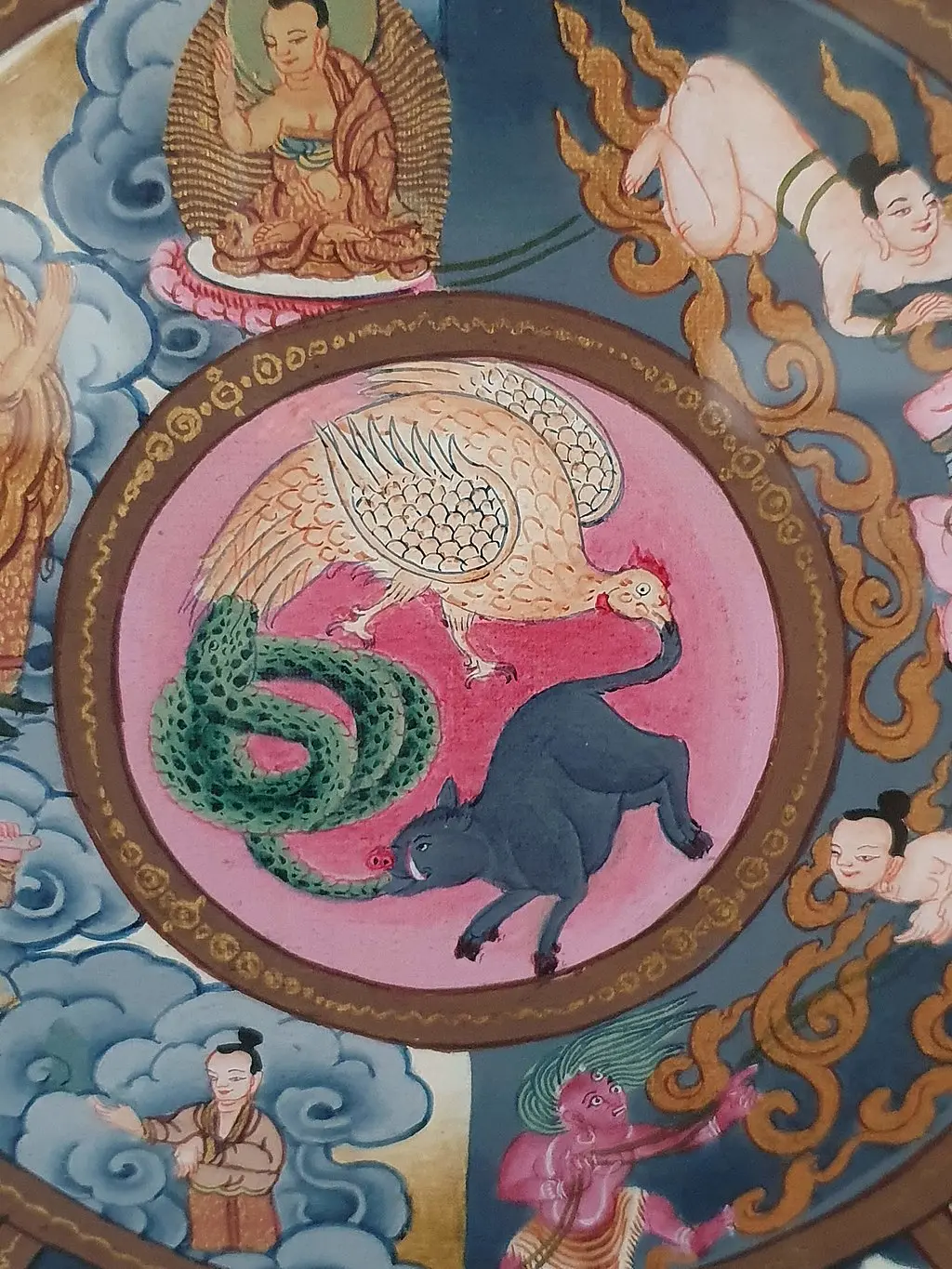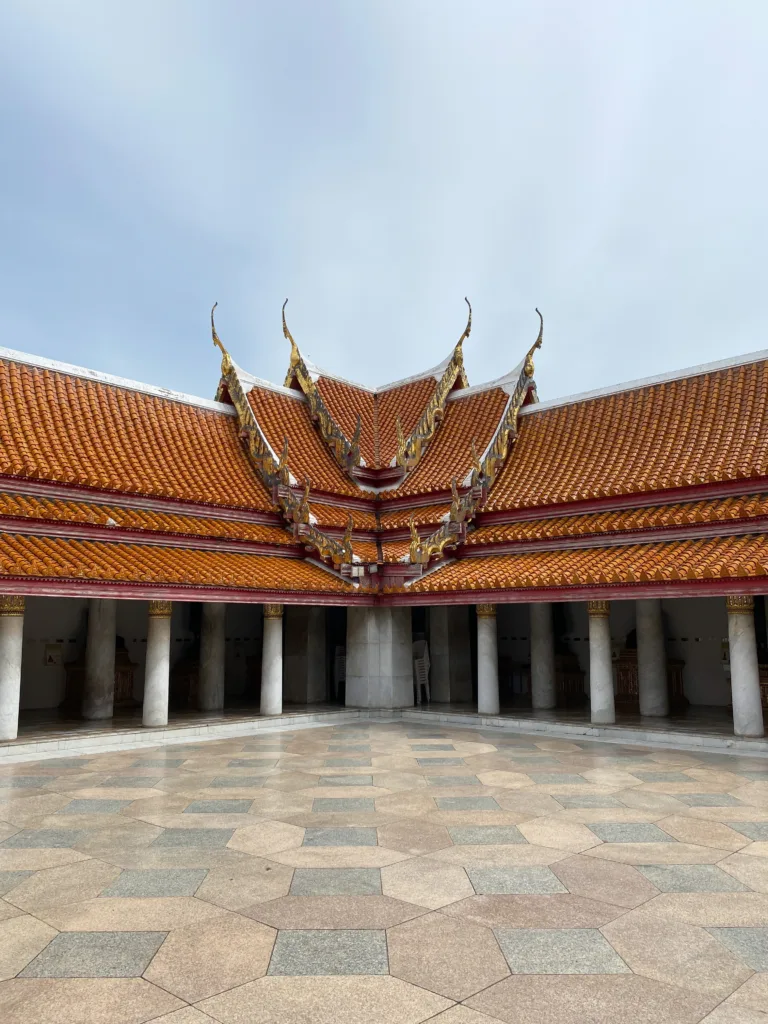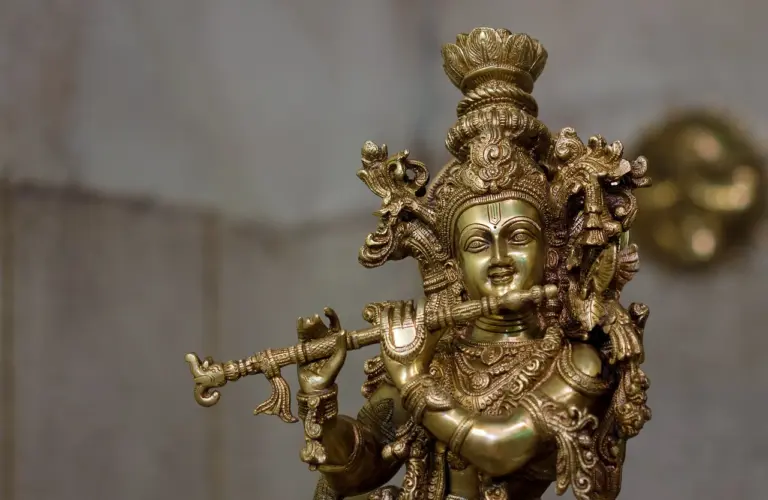Throughout history, nature has painted metaphors upon the canvas of human consciousness, and few symbols are as universally revered as the lotus flower.
Rising untouched from murky waters, the lotus has become an emblem of purity, rebirth, and spiritual elevation across many cultures and spiritual traditions. Making it all the way into the logo of this very website!
This article traces the lotus’s evolution from a simple aquatic plant to a powerful icon of transcendence, weaving through tales and legends that span time immemorial!
Table of Contents
ToggleWhat is a Lotus?
The lotus flower, known scientifically as “Nelumbo nucifera”, is a perennial aquatic plant native to tropical regions of Asia and Australia.
Often confused with water lilies, the lotus is very distinctive and carries with great symbolism that extends across various cultures around the world.
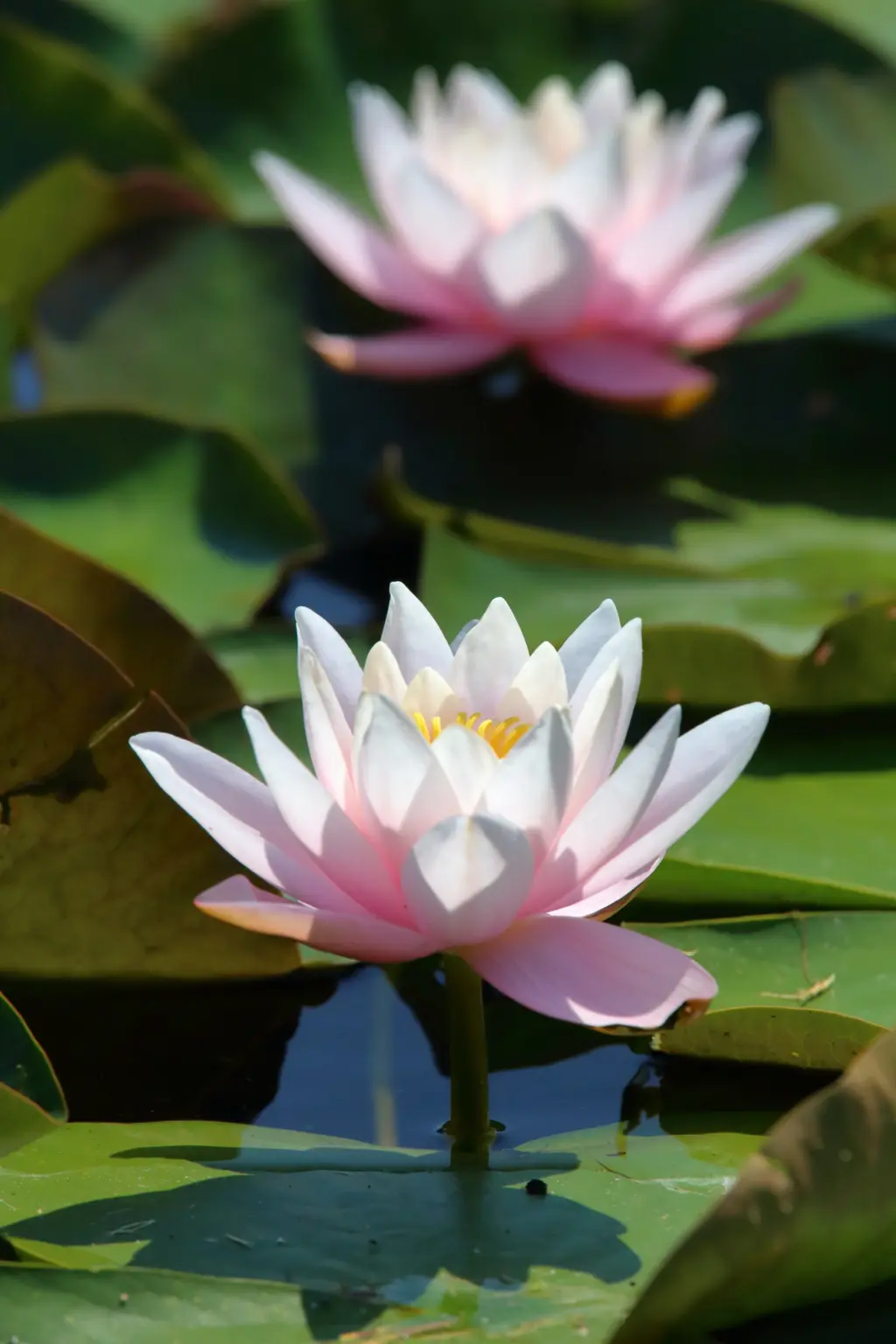
What Makes the Lotus Unique?
Rhizome Growth: The lotus has a thick, tuberous rhizome that anchors it to the mud and silt of freshwater bodies. From this rhizome, long stems rise above the water’s surface, terminating in blossoms and broad, circular leaves.
Self-cleaning Leaves: One of the most remarkable features of the lotus is its self-cleaning or “lotus effect” leaves. These leaves are superhydrophobic, meaning they repel water. When water droplets fall onto them, they bead up, collecting dirt along the way, and roll off, leaving the surface clean.
Thermal Regulation: The lotus flower possesses the rare ability to regulate its temperature, much like warm-blooded animals. This thermoregulatory behavior can attract certain pollinators, as the warmth offers them a respite from the colder surrounding environment.
Longevity and Durability: Lotus seeds have a remarkable shelf life. Some seeds discovered in ancient Chinese tombs and dated to be over a thousand years old have been successfully germinated. This is solid proof to the flower’s resilience. Plus lotus seeds are known to grant good health in Chinese and Japanese cultures.
Unique Flower Structure: The lotus flower comes in various colors, from pure white to pink and even a soft shade of blue. The central part of the flower, known as the receptacle, looks like a small circular pod (often yellow) with the seed holes visible when the petals fall away. This structure is unique to the lotus and differs significantly from other aquatic plants.
So as you can see, this combination of features – its striking appearance, its self-cleaning leaves, its ability to maintain a consistent temperature, and its incredible resilience – makes the lotus flower not only a botanical marvel but also a source of inspiration for numerous spiritual traditions.
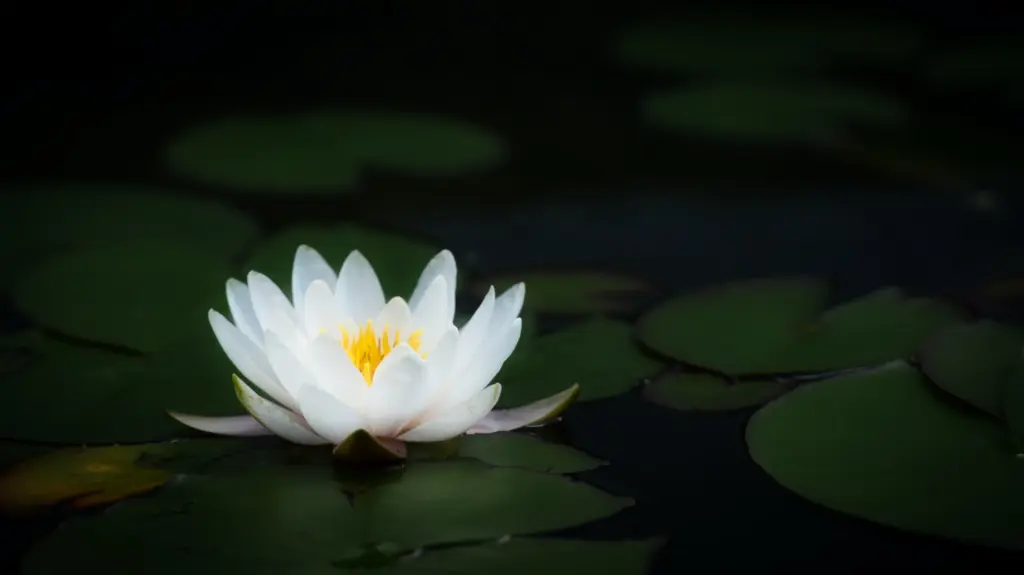
The Lotus in Hinduism
In the vast expanse of Hinduism, few symbols are as universally revered as the lotus.
Its gentle petals and luminescent colors, contrasted with the muddy waters from which it emerges, have inspired spiritual metaphors and artistic depictions for millennia.
The symbolic meanings of the lotus in Hinduism run deep.
Its emergence from murky waters to display a pristine bloom epitomizes purity and beauty, suggesting an aspirational message for humanity: we too can rise above our circumstances.
This transformation from bud to full bloom represents a soul’s journey from ignorance to enlightenment.
Its petals unfolding under the sun’s warmth can be seen as our souls’ potential, reaching out for spiritual growth.
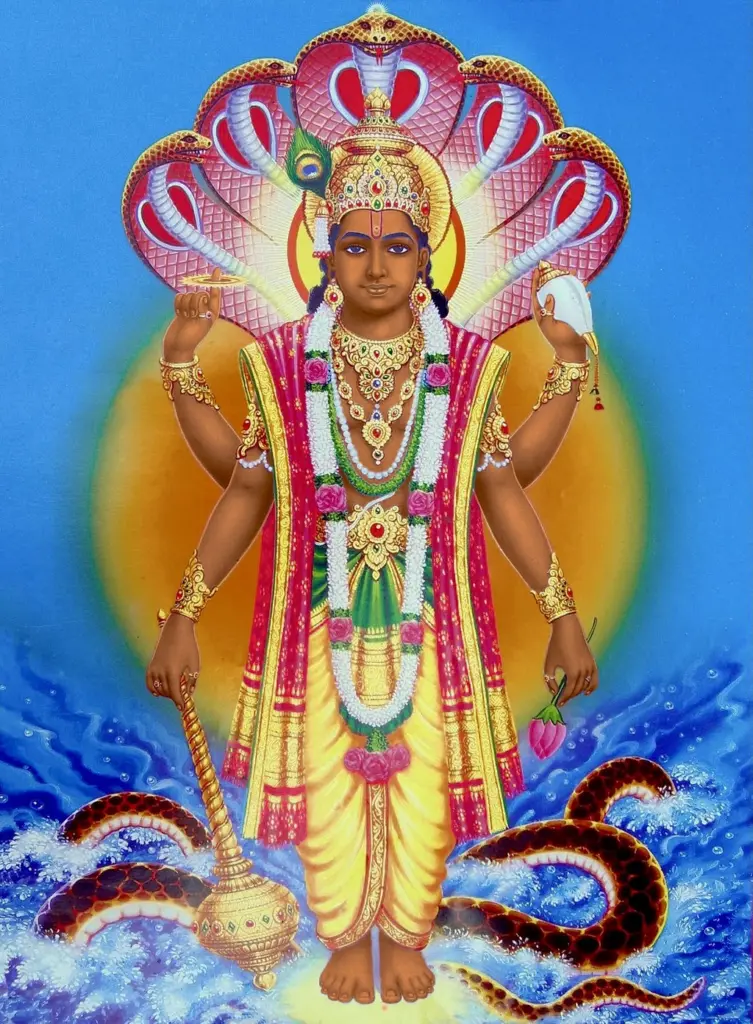
The Lotus and Hindu Deities
-
Lakshmi: The goddess of wealth, fortune, and prosperity, Lakshmi is often depicted seated on a red lotus, symbolizing her divine nature and purity. The lotus underlines not just material wealth but also spiritual richness. The blossoming of the lotus is emblematic of spiritual enlightenment, suggesting that true wealth comes from inner growth.
-
Brahma: Brahma, the god of creation, is frequently shown emerging from a lotus that rises from the navel of Vishnu, who lies on the cosmic ocean. This portrayal captures the essence of cosmic creation and the interconnectedness of the divine forces. The lotus here signifies the universe itself, with Brahma as its originator.
-
Vishnu: Often seen holding a lotus in one of his four hands, the lotus in Vishnu’s hand symbolizes beauty, purity, and the flourishing of creation.
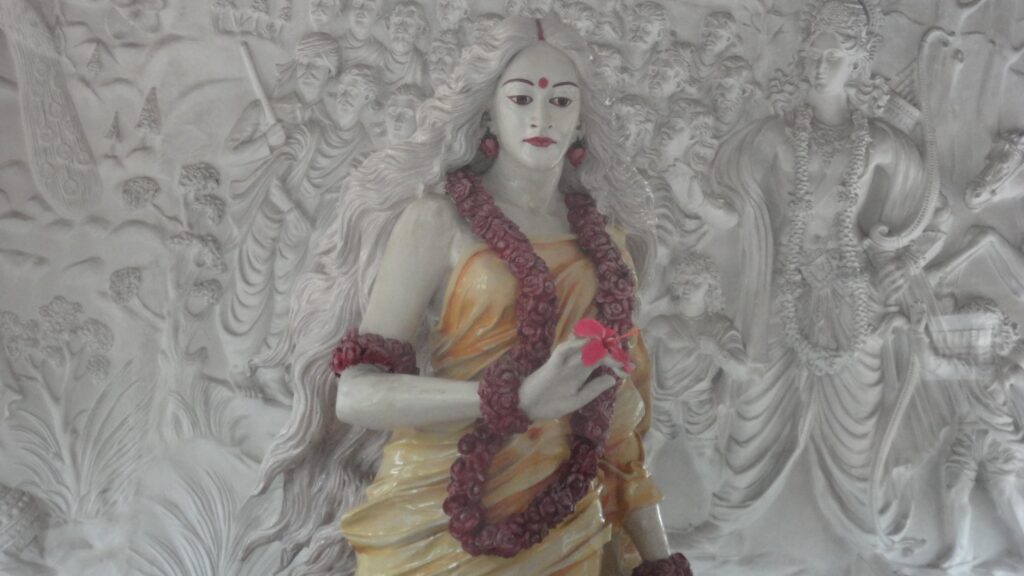
The Lotus in Hindu Scriptures
Ancient scriptures further cement the lotus’s esteemed position. In the Bhagavad Gita, Krishna refers to individuals who remain unaffected by worldly troubles as akin to a lotus leaf, untouched by water.
This beautiful analogy emphasizes the virtues of detachment and the purity of the soul.
Creation myths within Hinduism often depict the lotus as a divine entity preceding creation itself.
The lotus is portrayed as a primordial, cosmic womb, underlining the idea that the universe’s vast complexities emerged from simple beginnings.
From the poetic descriptions in epics like the Ramayana and Mahabharata, where heroines like Sita and Draupadi are often praised with “lotus eyes”, the lotus stands as a profound symbol within Hindu culture.
The Lotus in Buddhism
Buddhism, with its profound philosophical depths and embrace of nature’s metaphors, has long cherished the symbolism of the lotus flower.
Its essence aligns seamlessly with Buddhist teachings, making it a central emblem in Buddhist iconography.
In the Buddhist paradigm and similar to the Hindu interpretation, the very growth pattern of the lotus provides a compelling narrative of enlightenment.
Starting its journey in the murky waters, the lotus stem grows upwards, reaching toward the light.
As it surfaces, a beautiful flower blossoms, untouched by the mire below.
This mirrors the journey of a human soul, which, despite being born in the world of suffering (Samsara), has the potential to grow and achieve enlightenment.
Like the lotus, every person has the potential to rise from the mud, bloom out of the darkness, and radiate into the world.

Lotus Color Meaning in Buddhism
Beyond its general symbolism, the color of a lotus can provide specific insights into Buddhist teachings:
-
White Lotus: Representing purity of mind and spiritual perfection, the white lotus is closely associated with the historical Buddha, Siddhartha Gautama (the central figure in Theravada Buddhism), and the Bodhisattva Avalokiteshvara.
-
Red Lotus: This vibrant bloom is a heart’s emblem. It’s symbolic of the original nature and purity of the heart (hrdaya). It is the lotus of love, compassion, passion, activity, and all the qualities of the heart.
-
Blue Lotus: Symbolic of wisdom and knowledge, the blue lotus signifies the spirit’s victory over the senses. While it is depicted as partially open, its center is never seen, mirroring the endless possibilities of the universe.
-
Pink Lotus: Often reserved for the highest deities, this color is considered the supreme lotus and is associated with the Great Buddha, Amitabha.
-
Purple Lotus: A mystic lotus, purple variants are often depicted with either very many petals or just a few. They are representative of spiritual awakening and are often used to denote particular aspects of Vajrayana Buddhism. The crown chakra is also represented by a thousand-petalled purple lotus. The purple lotus above was taken in Angkor Park in Siem Reap, Cambodia.

The Lotus in Buddhist Art and Literature
Buddhist art is replete with lotus imagery. In Ulaanbaatar‘s Fine Art Museum, I saw depictions of Buddhas and Bodhisattvas sitting on lotus thrones all the time.
In Polonnaruwa, the ancient Buddhist capital of Sri Lanka, I took a photo of a beautiful geometric pond aptly named the “Lotus Pond.”
There’s also a parable in the Lotus Sutra, one of the most influential Mahayana sutras, which compares the blossoming of the lotus to the unfolding of a Buddha’s teachings in a one’s life.
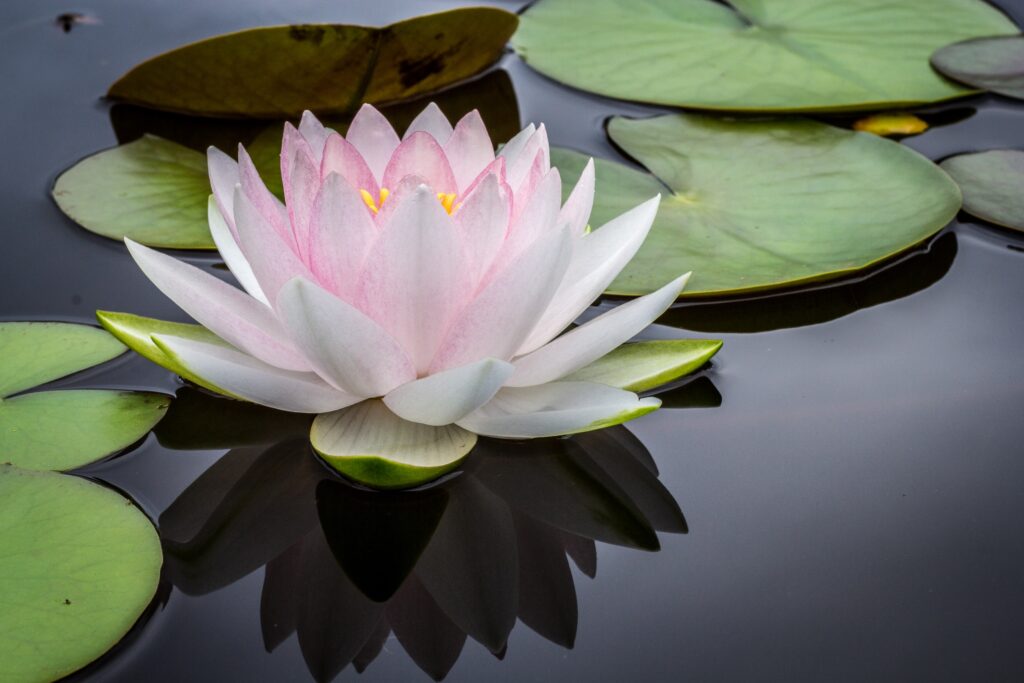
The Lotus in Taoism
Taoism, an ancient and intricate philosophy-religion originating from China, revolves around the Tao, often translated as “the Way.”
This concept implies a cosmic force that runs through all existence, governing natural order and balance (Yin and Yang).
Within this context, the lotus also emerges as an symbol of harmony, purity, and the unblemished beauty of nature.
In Taoist thought, Wu Wei denotes the idea of “effortless action.”
It’s the act of flowing with nature, aligning oneself with the Tao, and not resisting the universe’s rhythm.
The lotus, growing effortlessly from the mud to bloom beautifully on the water’s surface, can be seen as a botanical embodiment of Wu Wei.
Without struggling against its environment, it thrives and blossoms — an organic representation of Taoist ideals.
Immortality is a recurring theme in Taoist mythology, with many tales recounting stories of sages seeking the elixir of life.
Such as the famous legend of the Moon Goddess Chang’e, which is associated to the mooncakes!
The lotus, in its pristine form, often symbolizes longevity and eternal life in Taoist literature.
Some texts even depict immortals residing on lotus thrones or using the plant in their alchemical concoctions.

The Lotus in Ancient Egypt
Egypt, with its sprawling Nile and sun-drenched lands, held the lotus in great esteem.
This flower, blooming from the watery depths to greet the sun, became a powerful symbol for the cyclical nature of life, death, and rebirth.
The lotus flower, particularly the white lotus, was deeply connected to the sun and the creation myths in ancient Egypt.
Every night, the sun was believed to set in the petals of the lotus, marking the end of the day. With dawn, the sun would emerge or be “reborn” from the lotus, symbolizing rebirth and regeneration.
This daily cycle mirrored the Egyptian belief in death and rebirth in the afterlife.
Moreover, the god of creation, Atum, was said to have emerged from a lotus flower that bloomed on the primordial waters of Nun, marking the beginning of creation. (It’s quite similar to the Creation story of Hinduism, no?)
The Lotus in Egyptian Hieroglyphics
In ancient Egyptian art and hieroglyphics, the lotus symbol was ubiquitous.
Tombs, temples, and other architectural structures would frequently be adorned with lotus motifs, hinting at the desire for eternal renewal.
The lotus also appeared in countless sculptures, jewelry pieces, and even in the crowns of pharaohs!
Significance of the Blue Lotus
While the white lotus symbolized creation and rebirth, the blue lotus had a slightly different, more multi-faceted role in ancient Egyptian culture.
Often associated with death and the afterlife, it was also a symbol of rebirth and was used in funerary rites.
The blue lotus was also linked to the god Nefertem, who was believed to bring healing and beauty.
This lotus variety had a euphoric scent and was used in perfumes and possibly even consumed in rituals as the blue lotus is known to have psychoactive properties.
Today, it’s even used as an aphrodisiac!

